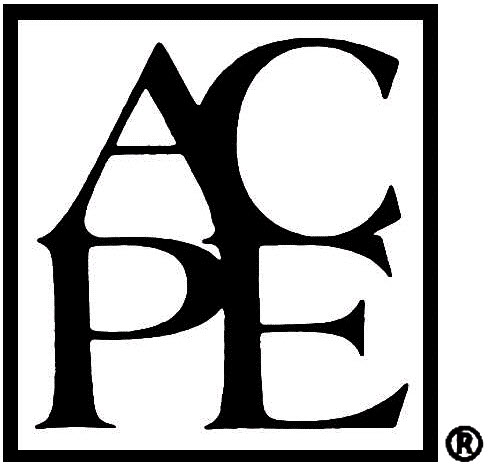The Diverse Properties and Uses of Beta-Blockers
Disease State Management/Drug Therapy CE for Pharmacists
Are you a Pharmacy Tech? Check out the Pharmacy Tech version of this course.
Course Summary
Beta-blockers are essential in the treatment of many cardiovascular diseases, including congestive heart failure, myocardial infarction, and tachyarrhythmias. Beta-blockers are also used for migraine prophylaxis, performance anxiety, glaucoma, and various other conditions. They have notable side effects, contraindications, and warnings associated with their use. Pharmacists should be aware of these when determining the appropriateness of beta-blocker therapy. Additionally, pharmacists should note any potential drug interactions when beta-blocker therapy is initiated. This course will review the pharmacologic characteristics of beta-blockers, identify indications for beta-blocker therapy, and highlight adverse reactions, contraindications, warnings, and interactions associated with beta-blocker therapy. Finally, the management of beta-blocker overdose will be discussed.
Describe the mechanism of action of beta-blockers, including differentiating between nonselective and beta-1 selective agents
Identify indications for beta-blockers, including labeled and off-label uses
Discuss side effects, interactions, warnings, and contraindications of beta-blocker therapy
Review the management of beta-blocker overdose
Course Syllabus
I. Introduction
II. History of Beta-blockers
III. Clinical Pharmacology
IV. Mechanism of Action
1. Beta Receptor Specificity
2. Intrinsic Sympathomimetic Activity
3. Membrane Stabilizing Activity
4. Lipid Solubility
5. Serotonin Receptor Activity
V. Pharmacological Profile of Beta-blockers
VI. Pharmacokinetics
VII. Labeled Uses
1. Angina Pectoris
2. Atrial Fibrillation
3. Mild to Moderate Heart Failure
4. Hypertension
5. Myocardial Infarction
6. Ventricular Arrhythmias
7. Glaucoma and Ocular Hypertension
VIII. Off-Label Uses
IX. Beta-blocker Dosage Forms, Metabolism, and Half-lives
X. Contraindications and Warnings
1. Patients with Asthma or COPD
2. Diabetes Mellitus
3. Withdrawal Warning
XI. Adverse Reactions
XII. Drug Interactions
XIII. Specific Populations
1. Pregnancy
2. Lactation
3. Renal Impairment
4. Hepatic Impairment
Beta-Blocker Poisoning
1. Beta-Blocker Overdose: Signs, Symptoms, and Treatment\
2. Intravenous Glucagon
XIV. Summary
- Read the course objectives and faculty planner disclosure
- Read the course material
- Complete the post-test with a minimum score of 70% and complete the course evaluation form.
- Results are automatically submitted to CPE Monitor
Faculty Planner Disclosure
The following individuals were involved in the development of this activity: Marilyn Lajoie, MD, DC, CCSP, Susan DePasquale, MSN, PMHNP-BC, Amanda Mayer, PharmD, and Jeff Goldberg, PharmD, BCPP. There are no financial relationships relevant to this activity to report or disclose by any of the individuals involved in the development of this activity.
Unlabeled Use Disclosures
The information provided in this course is general in nature and it is solely designed to provide participants with continuing education credit(s). This course and materials are not meant to substitute for the independent, professional judgment of any participant regarding that participant’s professional practice, including but not limited to patient assessment, diagnosis, treatment and/or health management. Medical and pharmacy practices, rules, and laws vary from state to state, and this course does not cover the laws of each state; therefore, participants must consult the laws of their state as they relate to their professional practice. Healthcare professionals, including pharmacists and pharmacy technicians, must consult with their employer, healthcare facility, hospital, or other organization, for guidelines, protocols, and procedures they are to follow. The information provided in this course does not replace those guidelines, protocols, and procedures but is for academic purposes only, and this course’s limited purpose is for the completion of continuing education credits. Participants are advised and acknowledge that information related to medications, their administration, dosing, contraindications, adverse reactions, interactions, warnings, precautions, or accepted uses are constantly changing, and any person taking this course understands that such person must make an independent review of medication information prior to any patient assessment, diagnosis, treatment and/or health management. Any discussion of off-label use of any medication, device, or procedure is informational only and such uses are not endorsed hereby. Nothing contained in this course represents the opinions, views, judgments, or conclusions of RxCe.com LLC. RxCe.com LLC is not liable or responsible to any person for any inaccuracy, error, or omission with respect to this course, or course material.
Computer Hardware/Software Requirements
Please ensure the device you plan to use meets these requirements and specifications:
- Operating System: Windows 7,8,10, or 11 /Mac OS X 10.9 or later/iOS/Android
- Supported Browsers: Microsoft Edge, Firefox, Google Chrome, Safari, Opera
- A connection to the internet
- For Live Webinars or Conferences: GoToWebinar application for iOS, Android, Mac, or PC. You cannot 'call into' a live conference.
Rating: 4.98/5
Based on the ratings of 244 customers
- Target Audience: Pharmacist
- Secondary Audiences: This educational activity is also for other healthcare professionals, such as nurses, physicians, or others who may be part of a healthcare team and may be interested in this educational topic. A healthcare team approach to patient care may be discussed in this activity, as applicable. No state board or professional organization has evaluated this activity to determine whether it meets the continuing education requirements of nurses, physicians, or other professions not listed under the “Target Audience” described above. Always verify with individual employers or supervisors whether they will accept this educational activity upon completion.
- Contact Hours: 2.0 (0.2 CEUs)
- Activity Release Date: 10/18/2022
- Activity Expiration Date: 10/18/2025
- Activity Type: Knowledge
- UAN: 0669-0000-22-045-H01-P
- Topic: Disease State Management/Drug Therapy
- CeBroker Number: 20-965526
Faculty:

RxCe.com, LLC is accredited by the Accreditation Council for Pharmacy Education as a provider of continuing pharmacy education.